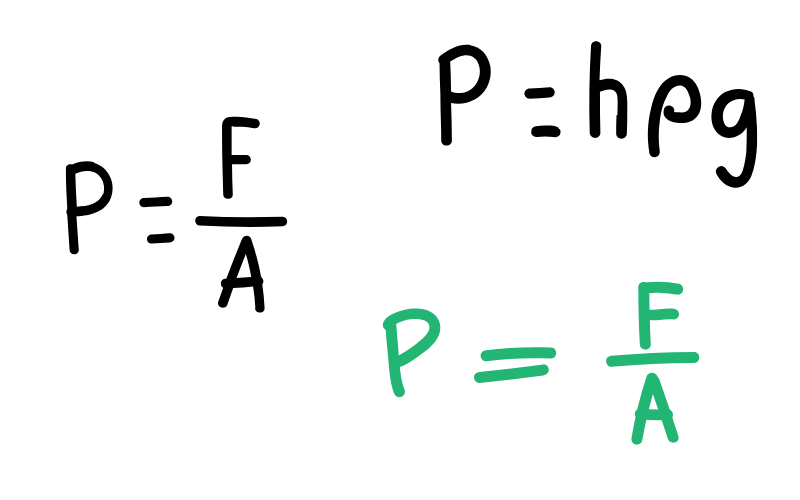How to Calculate Pressure: A Comprehensive Guide
Understanding how to calculate pressure is fundamental in physics, engineering, and many practical applications. Whether you’re working with hydraulic systems, analyzing atmospheric conditions, or designing pressure vessels, mastering pressure calculations is essential for accurate measurements and safe operations.
What is Pressure?
Pressure is defined as the force applied perpendicular to a surface per unit area. In simple terms, it measures how much force is distributed over a given area. The pressure definition encompasses the relationship between force and the surface area over which that force acts.
The basic pressure formula is expressed as: P = F/A
Where:
- P = Pressure
- F = Force applied perpendicular to the surface
- A = Area of the surface
Understanding the Pressure Formula: P = F/A
The fundamental formula of pressure, P = F/A, forms the basis for all pressure calculations. This pressure equation demonstrates that pressure increases when force increases or when the area decreases. Conversely, pressure decreases when force decreases or area increases.
Key Components:
- Force (F): Measured in Newtons (N) in the SI system
- Area (A): Measured in square meters (m²) in the SI system
- Pressure (P): Measured in Pascals (Pa), where 1 Pa = 1 N/m²
Common Pressure Units and Conversions
Understanding different pressure units is crucial when learning how to calculate pressure in various contexts:
Primary Units:
- Pascal (Pa): The SI base unit of pressure
- PSI (Pounds per Square Inch): Commonly used in the United States
- Bar: Widely used in engineering applications
- mmHg: Used in medical and meteorological applications
Conversion Factors:
- 1 Bar = 100,000 Pa
- 1 PSI = 6,895 Pa
- 1 mmHg = 133.3 Pa
How to Calculate Pressure of a Tank
When determining how to calculate tank pressure, several factors must be considered depending on the tank type and conditions:
For Liquid Storage Tanks:
Tank pressure calculations often involve hydrostatic pressure, which depends on liquid depth:
P = ρgh + P₀
Where:
- ρ = Liquid density
- g = Gravitational acceleration (9.81 m/s²)
- h = Height of liquid column
- P₀ = Atmospheric pressure
For Pressurized Gas Tanks:
Gas tank pressure calculations may involve the ideal gas law: PV = nRT
Head Pressure Calculator Principles
A head pressure calculator determines pressure based on the height of a fluid column. This concept is particularly important in hydraulic systems and water distribution networks.
Head Pressure Formula:
P = ρgh
Where:
- P = Head pressure (Pa)
- ρ = Fluid density (kg/m³)
- g = Gravitational acceleration (9.81 m/s²)
- h = Height of fluid column (m)
Surface Pressure Calculations
Surface pressure calculations are essential in meteorology, oceanography, and engineering applications. Surface pressure refers to the pressure exerted by a fluid on a surface.
Applications Include:
- Weather forecasting and atmospheric analysis
- Structural load calculations
- Fluid dynamics in piping systems
- Aerodynamic force calculations
Using a PSI Calculator
A PSI calculator converts pressure measurements between different units, particularly useful when working with imperial measurements. When using a PSI calculator:
- Input the known pressure value
- Select the source unit (Pa, Bar, mmHg, etc.)
- Choose PSI as the target unit
- Calculate the conversion
Example Calculation:
To convert 101,325 Pa to PSI: 101,325 Pa ÷ 6,895 Pa/PSI = 14.7 PSI
Practical Examples of Pressure Calculations
Example 1: Basic Force and Area
A force of 500 N is applied to a surface area of 2 m². Calculate the pressure: P = F/A = 500 N ÷ 2 m² = 250 Pa
Example 2: Tank Pressure with Liquid
A water tank has a liquid height of 10 meters. Calculate the pressure at the bottom: P = ρgh = 1000 kg/m³ × 9.81 m/s² × 10 m = 98,100 Pa
Example 3: Converting Units
Convert 2 Bar to PSI using a pressure calculator approach: 2 Bar × 14.504 PSI/Bar = 29.01 PSI
Advanced Pressure Calculation Considerations
Temperature Effects:
Temperature changes can significantly affect pressure calculations, especially in gas systems. The relationship follows Gay-Lussac’s Law for constant volume systems.
Dynamic vs. Static Pressure:
- Static Pressure: Pressure in a fluid at rest
- Dynamic Pressure: Pressure due to fluid motion
Gauge vs. Absolute Pressure:
- Gauge Pressure: Pressure relative to atmospheric pressure
- Absolute Pressure: Total pressure including atmospheric pressure
Tools and Resources for Pressure Calculations
Modern pressure calculator tools can simplify complex calculations:
Digital Pressure Calculators:
- Online conversion tools
- Mobile applications
- Engineering software packages
- Scientific calculators with pressure functions
Manual Calculation Methods:
- Reference tables and charts
- Conversion factors
- Mathematical formulas
- Engineering handbooks
Safety Considerations in Pressure Calculations
Accurate pressure calculations are crucial for safety in pressurized systems:
Important Safety Factors:
- Always include safety margins in design calculations
- Verify calculations with multiple methods
- Consider worst-case scenarios
- Regular calibration of measuring instruments
- Proper understanding of system limitations
Conclusion
Learning how to calculate pressure involves understanding the fundamental relationship between force and area, expressed in the pressure formula P = F/A. Whether you’re determining tank pressure, using a head pressure calculator, or working with surface pressure measurements, the basic principles remain consistent.
Mastering pressure calculations requires practice with various units, understanding different pressure types, and applying appropriate formulas for specific situations. With proper knowledge of the pressure equation and available calculation tools, you can confidently solve pressure-related problems in engineering, scientific, and practical applications.







